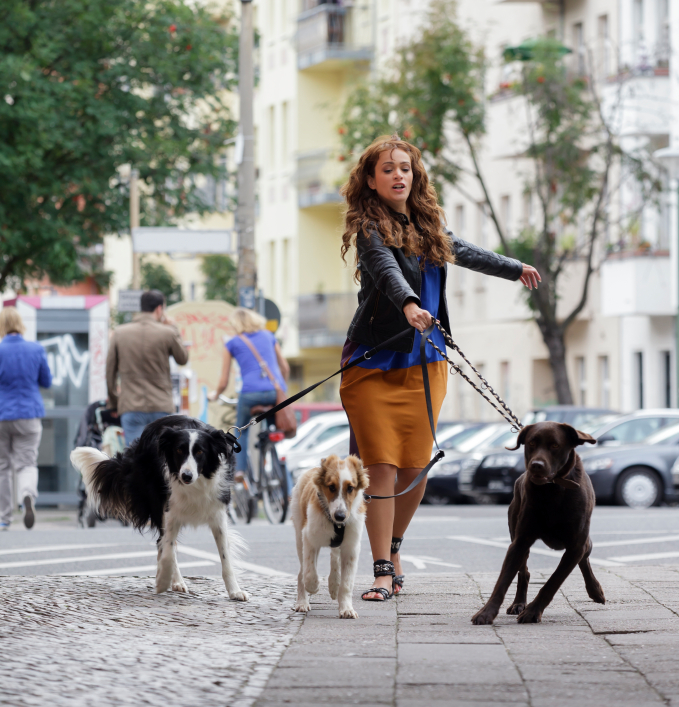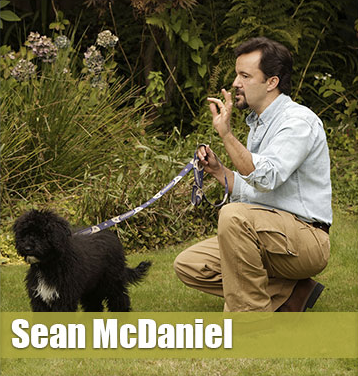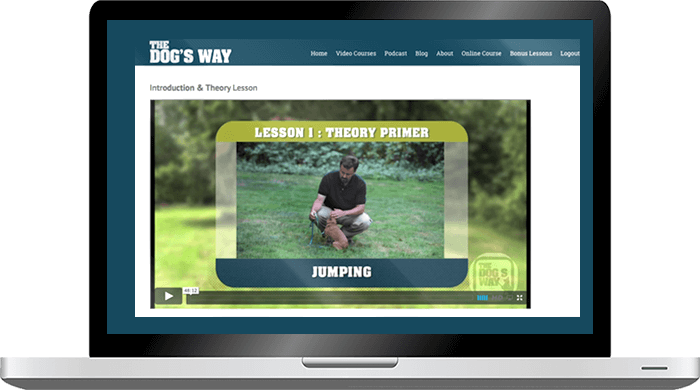What Does Leash Pulling Say about Your Relationship with Your Dog?

The Issue
Many people who call me about training have “leash pulling” in their top three things they want to fix on their list of issues. That actually works out well, because it’s the first thing that we address in lesson one. It’s not so much that pulling on a leash is the most egregious dog behavior violation. After all, there are plenty of more serious behaviors that you might want to address with a dog? However, starting with “loose leash” walking helps begin the general three step process that I work with. That is, fist deal with ‘relationship clarification’, then teach ”basic skills’, and then deal with ‘policies’ (or default rules and rituals).
Loose leash walking, or walking while giving your dog the full length of the leash, begins to tell me how your dog thinks of you relative to the outside world.
Watching someone go for a walk with their dog can tell me a lot about what the relationship is like. In the worst case scenario, particularly with larger dogs, it looks a lot like the old quip about “the dog walking the person”. People frequently have the experience of being dragged all over the neighborhood. In the “water skiing” type of walk, your dog is essentially saying, “look, I’ve got a lot of interests out here and you’re just not one of them!”
It becomes clear that your dog interacts with the outside world directly and that they don’t look to you for an interpretation of where to go, where to stop, what to like, dislike or really for any guidance at all. It’s a little like you’re simply an impediment at the other end of the leash whose only purpose seems to be making the walk slower than your dog wants. Now, If you have a smaller dog, it’s certainly not as inconvenient or annoying, but the “relationship” component remains the same.
The Remedy
To remedy the functional issue of being inconvenienced on your walk, many trainers teach a “controlled walk” as the introduction to training. There are slight differences in each trainer’s technique in teaching a controlled walk, but they mostly involve having a dog on a short leash, walking at our left side.
The instructions for this tightly controlled walk usually includes: not allowing a dog to sniff the ground, walk ahead of us, or basically do anything but walk quietly next to us on a short leash. While a controlled walk like this is a great skill to have, and would be the preferred way to walk through the pet store, vet’s office or the farmer’s market, it’s not the sort of walk that I start clients with in training. (By the way the controlled walk has its own relationship benefits – so, to be clear I’m not knocking that type of walk. I’m just suggesting that I usually do it as a later step).
I’ve found that if we start with a hyper controlled walk, many clients end up walking around the neighborhood “carrying” their dog as if they were holding an old heavy suitcase. They spend a lot of time “holding” the dog tightly next to them in the “proper” position. My preference is to start with loose leash walking so that a dog gets a few more choices about where they can be, which results in them having to think a little harder about where their owner is. Additionally, the person has to learn more finesse in working the leash (keeping it loose 99.5% of the time), as well as learning to read their dog’s body language to interpret whether their dog is aware of them or oblivious to them.
The main goal in loose leash walking is that our dog simply starts to actually be aware of us while on the walk. The second goal in the loose leash walking is that our dog looks to us to interpret distractions around us. As mundane and basic as these goals seem, they serve to create a foundation that makes any other training easier to do with our dog. This loose leash walking exercise becomes the default means of walking with any dog when on leash with us.
From the moment the leash goes on, whether you’re in the house, in the yard, out for an actual walk, the message we”re sending our dog is the perpetually the same; “it’s your responsibility to keep the leash loose and be aware of what I’m doing”. This loose leash “discussion” communicates the idea to our dog that they can’t ever totally forget about us.
The Video
Rather than write a lengthy description of what I mean by loose leash walking, I thought I’d show you a little excerpt from lesson one of my video training series. In this clip, “Effie”, a little Chihuahua/Rat terrier mix begins the lesson just wanting to sniff around and explore, (which, in and of itself is not necessarily bad) but when we allow the exploration and interests to outweigh any awareness of the owner, when walking on leash, we make the mistake of training a dog to “forget about us”.
Addison, Effie’s owner, described that he can never get Effie’s attention when they go outside anywhere. She just wants to sniff and explore and chase things and she pulls on the leash constantly. The pulling itself isn’t “that big a deal” to Addison because she only weighs 19 pounds. The exercise will pay off more with Addison’s other dog (a 120 pound Anatolian Shepherd – not seen in the video). The more important issue, regardless of the size of the dog, is that leash pulling is indicative of a dog’s lack of awareness or interest in what her owner is doing when out for a walk.
See if you can notice the difference in Effie’s awareness and her ability to follow in the first couple minutes of doing the exercise. This is a small excerpt from lesson one in our twelve lesson video course (for dogs over 7 months old), but if you feel that you have a sense of this exercise, (and your dog is over 7 months old) feel free to experiment with it. If you have more questions, you can always post a question in the comments, or contact me at sean@thedogsway.com Best of luck with your new walking ritual.
NOTE: It’s also important to keep in mind that this basic relationship assessment and loose leash walking exercise applies to dogs over 7 months old. Beyond 7 months old, we can begin expecting increasing levels of responsibility in exercises like this and therefore we can stop using food treats as a primary training tool. For puppies under 7 months old, we do the same exercise but we add in the use of treats to reward following behavior and we add in “announcing” or “vocalizing” our turns, and change of direction, to make the exercise quite a bit easier for young pups. Incidentally, we add back one, and sometimes both, of these elements for dogs over 7 months old, as a remedial exercise if they exhibit an overly shy demeanor as well.

About the Author: Sean
I’ve been training people and dogs in Seattle for the last decade and a half. My main focus when working with clients every week in one-on-one, private lessons is to help people learn to get their dogs to a functional level so that they can actually enjoy spending time every day with their dog instead of stressing about their dog’s behavior issues.
5 Comments
Leave A Comment
You must be logged in to post a comment.
Affiliate Program
Make money by referring people to the video course!
. . . . .

About Sean
I’ve been training people and dogs in Seattle for the last decade and a half. My main focus when working with clients every week in one-on-one, private lessons is to help people learn to get their dogs to a functional level so that they can actually enjoy spending time every day with their dog instead of stressing about their dog’s behavior issues.
Ask Sean a question!
If we use your question in the show, Sean will send you a coupon code for free access to the online video course!
If you have a question you’d like me to respond to on the show (and you want to hear yourself on a future episode) leave me a voice mail! 1 (844) 364-7929 or email me here.


I’ve looked at your video, but cannot imitate it with our rat terrier. She pulls so hard that even my husband can’t control her. We got her from a shelter about 3 years ago and estimate her to be about 5 years ago. We can’t afford a trainer and are out our wits’ end..
I have a 14 week old golden retriever puppy. I tried lose leash walking with her t great frustration. She likes to bite the leash and carry the handle in her mouth. Is she to young? Any help is appreciated. Thanks I’m really enjoying your podcasts. I also have a 6 yr old puggle who definitely needs work and am trying this with her as well.
Thank you.
Maribeth, our golden retriever has done the same thing – holding the leash in his mouth. Now he is older, he lets it go when I speak to him sternly!!
My 17 week old English Cream Golden Retriever puppy likes to bite the leash. I tell her “Let’s Go” and do a lot of talking to her verbal praise and petting and she still pulls. Walking her turns into a complete disaster. If in my driveway it’s a little better but out on the sidewalk or street she totally forgets about me.